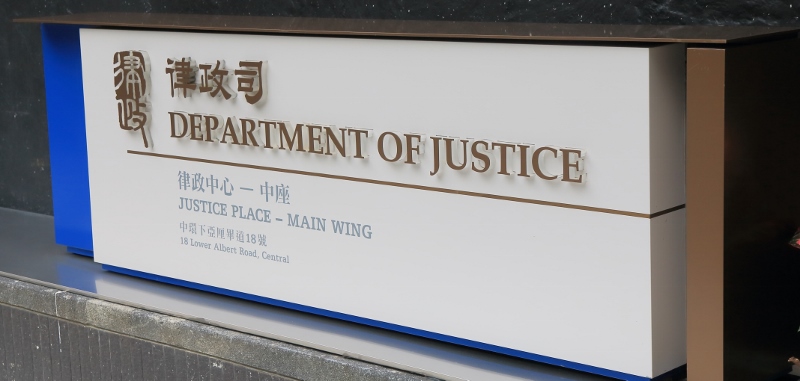By Kristie Wong and Jennifer Lee
Hong Kong, 30 March 2021: A landmark Court of Appeal judgment has enforced the legal principle of “joint enterprise” in regard to cases of alleged unlawful assembly or rioting. The judges have confirmed that even people not physically present at the scene can face the same charges as participants.
The CA’s decision, in response to an application from the Department of Justice, may have a significant impact on prosecutions arising from Hong Kong’s 2019 protests. In this article, the principle of joint enterprise, the case that led the CA’s ruling, and what the judgment entails are examined.
What is joint enterprise?
Joint enterprise adopts the fundamental principle of criminal law that a secondary party is guilty of the same offence as the principal. It is not dependent on proving that the principal committed the main offence and that the secondary party assisted or encouraged its commission. Liability is independently based on each defendant’s participation with the requisite mental state to constitute the offence.
In December 2016, the Court of Final Appeal confirmed in the matter of HKSAR v Chan Kam Shing FACC 5/2016 that joint enterprise liability remains part of Hong Kong criminal law. The CFA commented: “In basic … cases where the co-adventurers agree to carry out and then implement a planned crime, there can hardly be any doubt as to the culpability of all the participants, whichever one of them actually carried out the actus reus [the physical act] …”
The terms “principal” and “secondary party” distinguish the individual’s role in the crime but do not attribute lesser culpability to the latter. Further, it is not necessary for a party to a joint enterprise to be present at the scene of a crime to be acting in pursuance of a common purpose with others who are present.
Case background
In July last year, the District Court heard the first case of alleged rioting arising from the 2019 protests. All three defendants were acquitted. The court heard how an authorised assembly at Chater Garden in Central had descended into chaos after some participants broke away and marched westwards along Connaught Road Central despite police objections.
A violent confrontation between protesters and police ensued in Des Voeux Road West, with officers firing tear gas to disperse the crowd. The trio were arrested near the scene.
In acquitting the defendants, His Honour Judge Anthony Kwok said there was no direct evidence showing they had assembled together with other protestors or had actually participated in the riot. The prosecution could only rely upon on circumstantial evidence, including their outfits and equipment and their attempts to run away. The judge refused to make the finding inferentially that they were physically present at Des Voeux Road West at the time of the riot.
Crucially, His Honour Judge Kwok ruled that as a matter of statutory construction, sections 18 and 19 of the Public Order Ordinance had excluded the common law doctrine of joint enterprise covering offenders not present at the scene from the offences of riot and unlawful assembly, holding that:
- Joint enterprise was inapplicable to the offences in question because they had the distinctive feature of “corporate nature”, requiring the offenders to have a common purpose, and also to assemble together; and that rioting also derives its gravity from the sheer number of participants acting in concert to achieve their purpose with violence.
- Quoting a previous Court of Final Appeal ruling, the evidence of joint enterprise is stronger if all participants are present at the scene, while the defendants in another CFA case were convicted on the basis of their presence among the crowd as aiders and abettors, thereby providing encouragement to others to use violence.
The Secretary for Justice, without seeking a reversal of the acquittals, asked the Court of Appeal to answer two questions: first, whether the common law doctrine of joint enterprise applied to the offences of unlawful assembly and rioting; and second, if the answer to the first question was yes, whether a defendant’s presence at the scene was necessary for criminal liability.
Court of Appeal judgment
With its ruling last Thursday, the CA has indicated that the question of whether the doctrine of joint enterprise applies to sections 18 and 19 of the Public Order Ordinance, covering unlawful assembly and rioting, is essentially a matter of construction of the two provisions. It says “it is now well settled that the courts adopt a purposive approach to statutory construction” and that legislative history and public interests have been taken into consideration.
The judges conclude: “A contrary construction which excludes the doctrine of joint enterprise from sections 18 and 19 will have dire consequences for the maintenance of public order.”
The CA recognises that unlawful assemblies and riots nowadays are highly fluid in nature. “They involve a myriad of participants playing various roles and sometimes with a rather sophisticated division of labour among them. Some physically participate in the unlawful assembly or riot at the scene. Some aid or abet the participants at the scene. Some may not even be present but are clearly participants under the doctrine of joint enterprise.” The CA cites the following examples:
- A mastermind who remotely oversees the situation and gives commands to participants on the ground.
- A person who funds or provides materials, such as distributing food and water at the scene.
- Someone who encourages or promotes the unlawful assembly or riot by making telephone calls or spreading messages on social media.
- A person who provides back-up support in the vicinity of the scene, such as collecting gear, bricks, petrol bombs and other materials for the participants.
- Someone acting as a lookout.
- A person who drives a getaway car.
The CA stresses this list is not exhaustive. Indeed, there is no mention of members of the press, first aid workers, lawmakers, social workers or various other professionals who might be at the scene. It is also uncertain what extent of involvement constitutes participation as joint enterprise. For instance, will posting comments or recording stories on Instagram, or even simply giving a “like” on social media, constitute encouraging or promoting or even participating in an unlawful assembly or riot? This issue was also raised by Counsel for the second defendant.
However, the judges do address the issue of innocent people caught up in the chaos. “When a peaceful demonstration degenerates into unlawful assembly or even riot, common sense dictates that a peaceful demonstrator or a by-stander or onlooker should leave the scene as soon as reasonably practicable. If he does not do so for some good reason, or cannot because of the actual circumstances at the scene, his mere presence without more will not render him liable under section 18 or 19.”
Conclusions
The implications of the CA’s ruling have yet to be worked out. Potentially, it paves the way for more prosecutions arising from the 2019 protests. but it is unknown if or how this will affect future prosecution decisions. However, whatever role participants might have played, the court still has to be satisfied that they have all acted in concert with the principal offenders, thereby sharing both their physical acts and culpability.
Ultimately it still depends on the strength of the evidence regarding the shared intention and the actual circumstances of the case. These issues, along with a more critical assessment of the CA’s reasoning, are discussed in Part II.
Kristie Wong has been an Associate with BC&C since 2017, handling Criminal Matters while also being a core member of the Family Law department. She holds double degrees as a Bachelor of Social Sciences (Government and Laws) and Bachelor of Laws. She can be contacted at Kristie@boasecohencollins.com.
Jennifer Lee holds a law degree from the University of Birmingham in the UK and she gained her Master of Laws at the University of Hong Kong. She joined BC&C as a Trainee in 2019. She can be contacted at Jennifer@boasecohencollins.com.



